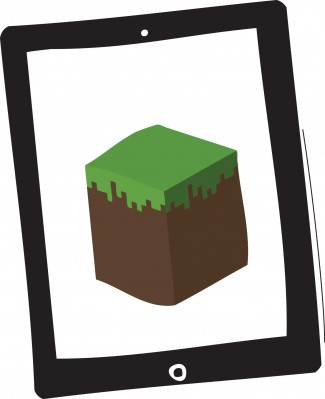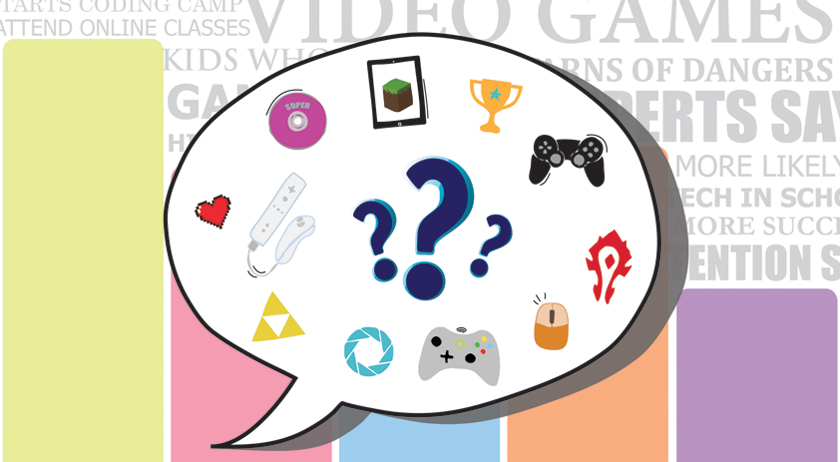You probably don’t need to be told that video games have moved out of subculture status to become an everyday part of life. Gaming devices are no longer hidden away in kids’ bedrooms—they’re now stacked in the family entertainment center. Grandma knows what Minecraft is and your daughter even plays it at school. You might have been ashamed to admit to being totally addicted to Donkey Kong 64 back in “the day”—particularly to your parents—yet now you find you have no problem picking up the Wii U remote when your kids beg for a round of Super Smash Bros.
There’s hardly a child born today to parents that haven’t, at some point in their lives, played video games (or, like me, still do). Aside from the graphics and hardware, the basics of gaming haven’t changed. The way we think about them, however, has. So as experts argue over screen time limits and developers promise educational games that have it all, you’re stuck somewhere in the middle wondering how the heck to talk to your child about video games.
Ask questions
There are so many games today, on a variety of platforms, that it’s impossible to know it all. Even with an “education” in gaming, parents who once considered themselves hardcore gamers might be totally in the dark when it comes to endermen, pork chops, and diamond mines (and why our kids love huge pixels so darn much). Ask your kids simple questions about the games they are playing, like “How many points do you get for that?” or “What do you have to do for this mission?” You may not get the “lingo” exactly right, and you may even get an eye-roll or two, but the more you express interest in the games your kids love, the more information they’ll volunteer. Soon you’ll be engaging in regular conversations, and what you’ll learn about how your kids think and what they value—in and out of the game—might surprise you.
Bone up on thinking skills

We should learn about the skills used in video games like Minecraft, even if we don’t understand the appeal
Most video games put all of our executive functions (thinking skills like focus, planning, organization, working memory, and time management) to the test in one way or another. The more familiar you are with these skills, the better able you’ll be to recognize where and when they are being used during your child’s video game play. Whether you get the appeal or not, a game like Minecraft challenges players’ planning, organization, self-control, flexibility, and self-awareness, among other skills. When you can spot the focus used in FarmVille, the planning needed for Portal 2, and the time management challenges in Triple Town, you’ll be well on your way to talking to your kids about the real world skills they use when they game. Hint: We include thinking skill information, talking points, and strategies in all of our Playbooks and app reviews.
Let them teach you
You might already be aware of what a powerful learning experience teaching can be. When we explain something or give others instructions, it cements knowledge, helps us make new connections, and increases our self-awareness. Even if you’re a parent who games, there’s a good chance there’s a title your child plays that you aren’t so familiar with. Ask them to show you what they’re playing lately and tell you why they like it. You can even pick up the controller and let them be the teacher. Encourage them to give you advice, feedback, or a walkthrough of a level/area. Have them recommend a game they think you’ll like and explain why you should play it.
[cjphs_content_placeholder id=”73596″ random=”no” ]Gamify chores and homework
Have you noticed that your child somehow keeps a meticulous World of Warcraft inventory but their backpack is a mess? They have trouble seeing a school project through to completion and yet they’ve unlocked every achievement on their favorite Xbox game? A large part of why kids (and many adults) enjoy video games is because they not only reward us for efforts large and small, they are a safe place to try and fail and try again. Video games also tend to make it super easy to sort and compartmentalize our inventory, plan missions, and see how much we have left to do before the timer runs out—things we may have trouble with in real life. Maps are marked, quests are crossed off, and bosses often come with a difficulty rating. Applying the fun elements of video games to the things in life that aren’t so fun (or easy) is called gamification. Try assigning point values to household tasks and creating an achievement system for homework assignments. The next time there’s a spill, make a mission out of cleaning it up. For a trip to the grocery store, gather your “party” for the quest, assigning attributes and recruiting individuals to help gather items when you’re there. Gamification is the concept behind apps like ChoreMonster and SuperBetter, and schools and businesses are even catching on!
You’ve just learned four easy ways to talk to your child about video games! Level up!
Artwork by Leah Watkins, 2015




